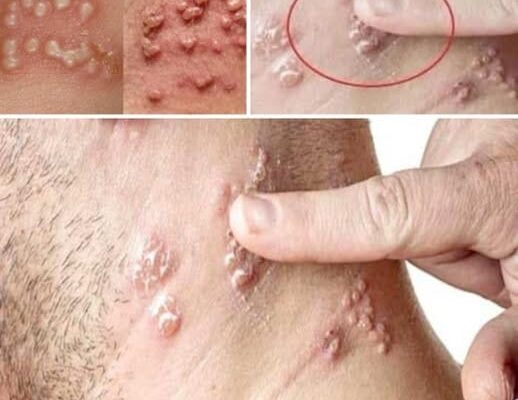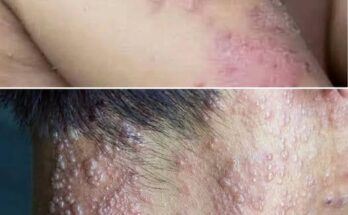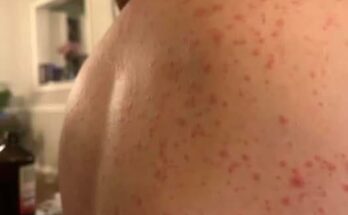A recent viral story about a man who discovered small holes or bumps on his finger has generated widespread attention online. Although the original post included dramatic claims, such as doctors calling the police and locking the patient in a room, there is no verifiable evidence from any official medical source that supports these sensational elements.
Instead, such skin conditions—particularly the sudden appearance of small bubbles, holes, or lesions—can often be traced back to dermatological causes, contact with certain plants, or parasitic or allergic reactions. Let’s look at what medical experts say when someone presents with this type of symptom.
What Are These Small Bumps or Holes on the Skin?
According to the American Academy of Dermatology (AAD) and Mayo Clinic, small bumps or pitted skin lesions on fingers can be caused by several conditions, including:
- Dyshidrotic Eczema (Pompholyx): Characterized by small, fluid-filled blisters, usually on the sides of fingers, palms, or soles. These blisters can cause itching and discomfort. Triggers may include stress, allergies, or exposure to irritants.
- Contact Dermatitis: Often a reaction to touching certain substances such as chemicals, plants, or metals. It can lead to redness, blisters, and localized swelling.
- Parasitic Infections: In rare cases, skin penetration by parasitic larvae (such as from Cutaneous Larva Migrans) may cause raised or pitted lesions. These typically occur after walking barefoot or coming into contact with contaminated soil, especially in tropical or subtropical environments.
- Pitted Keratolysis: A bacterial skin condition that can cause crater-like pits, primarily on the soles of the feet but occasionally on the hands. It’s associated with excessive moisture and sweating.
(Sources: Mayo Clinic, NIH, AAD)
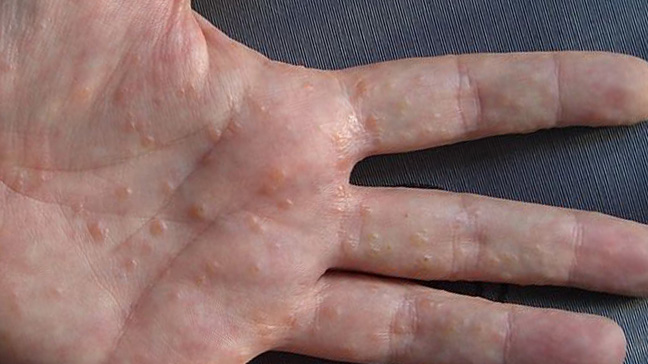
When to See a Doctor
Sudden skin changes should not be ignored. Dermatologists recommend scheduling an appointment if you notice:
- Painless or numb areas on the skin
- Rapidly developing bumps or holes
- Lesions that spread or do not heal
- Loss of sensation or color around affected skin
Such symptoms can indicate anything from a simple allergic reaction to a more serious infection. Proper evaluation, including skin cultures or biopsies, may be needed to determine the exact cause.
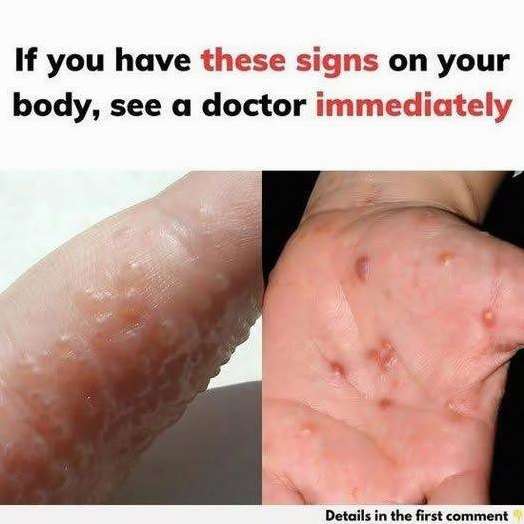
Real-Life Examples: Environmental Exposure and Skin Reactions
One confirmed case reported by Live Science in 2021 involved a hiker who developed severe dermatitis after contact with wild parsnip (Pastinaca sativa)—a plant that contains compounds called furanocoumarins, which can cause chemical burns when combined with sunlight (a condition known as phytophotodermatitis).
Similarly, exposure to poison ivy, oak, or sumac can result in itchy blisters and skin irritation, which may look like bubbles or small indentations on the skin. These are not unusual in outdoor hikers and foragers.
(Source: CDC – Poisonous Plants)
Diagnosing Skin Lesions: What Doctors Really Do
If a patient presents with symptoms such as skin holes or unexplained bumps, doctors typically follow a structured diagnostic approach:
- Medical history: Including travel, recent activities (like hiking or gardening), diet, or use of new skincare products.
- Physical exam: Observing the size, shape, and characteristics of the lesions.
- Laboratory tests: May include skin scrapings, blood work, or allergy testing.
- Imaging (if needed): In rare cases, if there’s suspected infection below the skin.
There is no standard protocol where doctors “lock patients in a room” or “call the police” unless the case involves a clear public health threat or criminal matter, such as exposure to a contagious disease with potential to spread.
For example, if a patient were infected with a quarantinable illness such as viral hemorrhagic fever, medical authorities are legally permitted to report and contain the case as per CDC quarantine regulations. However, such events are extremely rare and involve a transparent process with public health agencies—not secretive action as described in some fictionalized stories online.
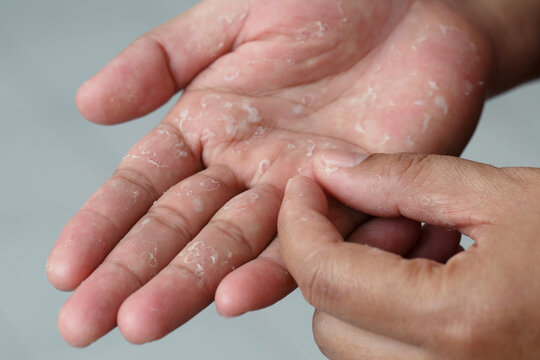
What to Do If You Experience a Similar Symptom
If you notice small holes, blisters, or unusual skin texture on your hands or fingers:
- Do not attempt to extract anything with tweezers or needles. This can worsen the condition and introduce infection.
- Wash the area gently with soap and water, then apply a mild antiseptic.
- Avoid scratching, which can lead to bacterial infections.
- Seek medical attention, especially if the affected area becomes numb, spreads rapidly, or is accompanied by fever.
In most cases, symptoms like these are manageable with medical care and do not require emergency intervention.
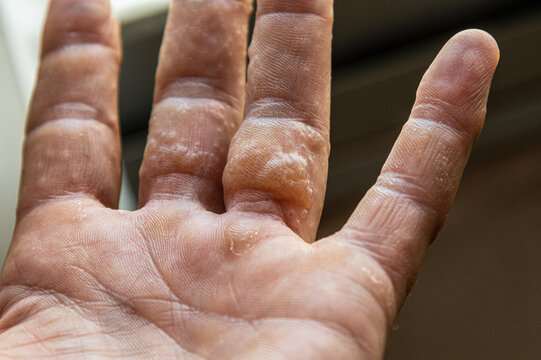
The Truth Behind the “Doctors Called Police” Narrative
The idea that a doctor would abruptly leave the room and involve law enforcement due to a skin condition is not supported by medical or legal procedures. While some skin symptoms may require public health notifications (such as signs of child abuse, severe communicable diseases, or chemical burns due to workplace exposure), these cases follow established reporting protocols under medical ethics and patient confidentiality rules.
No official medical records or news agencies such as BBC, Reuters, or WebMD have reported any such case involving a man with bubbles on his finger leading to police intervention.

Final Diagnosis and Outcome
In verified medical cases involving unusual skin reactions, outcomes generally improve with appropriate diagnosis and treatment. Whether the condition is linked to environmental exposure, allergic reaction, or infection, early consultation with a healthcare provider remains the safest course of action.
For instance, if a skin condition is caused by a non-native plant species, local environmental health authorities may investigate the area to assess risk and prevent further exposure. This can involve isolating trails, issuing public warnings, or removing hazardous vegetation — as seen in past poison parsnip incidents in North America and Europe.
Conclusion: Seek Facts, Not Fear
The human body often shows early warning signs through the skin, and paying attention to those signs is crucial. While unusual bumps or numbness can be alarming, most conditions have logical medical explanations. It’s important to separate viral fiction from medical reality and rely on trustworthy sources such as:
- CDC
- Mayo Clinic
- National Institutes of Health (NIH)
- American Academy of Dermatology (AAD)
